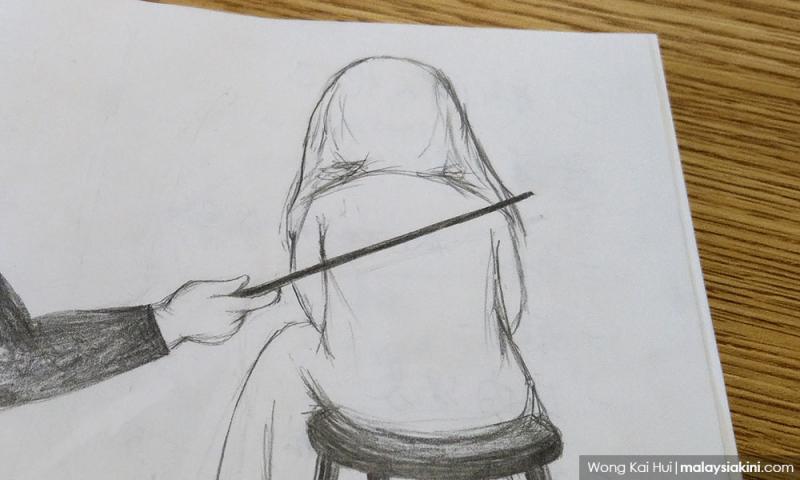KINIGUIDE | The public caning carried out at the Kuala Terengganu Syariah High Court on Monday has garnered much attention from politicians and human rights NGOs alike.
But how is the actual punishment carried out?
The details are contained in Section 125 of the Syariah Criminal Procedure (Terengganu) Enactment.
However, this law only applies in Terengganu, as each of Malaysia’s 13 states, and the Federal Territories, has its own syariah enactments.
Here, we look at how caning is carried out in Terengganu.
What is used for the caning?
The cane is to be made of rattan or a small branch twig that does not have segments or joints.
It should not exceed 1.22 metres in length and 1.25 centimetres in diameter.
What are the rules for performing the caning?
The convict must be dressed in accordance with religious rules (hukum syarak). If the convict is male, he receives the caning while standing. If the convict is female, she will be seated.
The official who carries out the caning is to lash the convict with “moderate” strength and without raising the cane above his head to avoid injuring the convict’s skin. The cane must also be raised upward after each lash instead of being pulled away.
The official may hit any part of the convict except the face, head, abdomen, chest, and genitals.
Can the punishment be performed anywhere?
Yes. Section 125 (3)(c) of the Syariah Criminal Procedure (Terengganu) Enactment states that the caning can be carried out at any location as directed by the court or the state government, as long as it is performed in presence of a government medical officer.

The Terengganu executive councillor in charge of syariah implementation, Satiful Bahri Mamat (photo), has said the state would consider other public venues to carry out public canings.
Satiful also told reporters that Terengganu syariah courts have the power to authorise canings to be carried out anywhere, including in prisons and any location outside of court.
Why must a medical officer be present at the caning?
Before the caning is performed, the law requires that the convict undergo a medical examination by a government medical officer to ensure that the convict is fit to undergo the punishment.
If the convict is pregnant, then the punishment can only be carried out two months after she has given birth or had a miscarriage.

The medical officer must also be present while the caning is performed. If the medical officer determines that the convict is no longer able to undergo the punishment, the punishment would then be deferred until the medical officer determines that the convict is fit to be caned.
Who is responsible for the caning?
Section 125 (3)(d) of the Syariah Criminal Procedure (Terengganu) Enactment is vague on the matter. It stipulates that the person who carries out the caning must be a “fair” and “mature” person.
Satiful said that in Monday’s public caning, female officers from the Kajang Prison had carried out the punishment. The Prisons Department is a federal government agency.
Is this the first public caning in Malaysia?
No. There was also a public caning carried out in 2016 in a syariah court in Tawau. The 2016 case involved a heterosexual couple convicted of adultery, whereas the latest case involved a lesbian couple.
So, the caning in Terengganu can be described as the first public caning in Malaysia performed against LGBT persons.
This instalment of KiniGuide is compiled by WONG KAI HUI.





